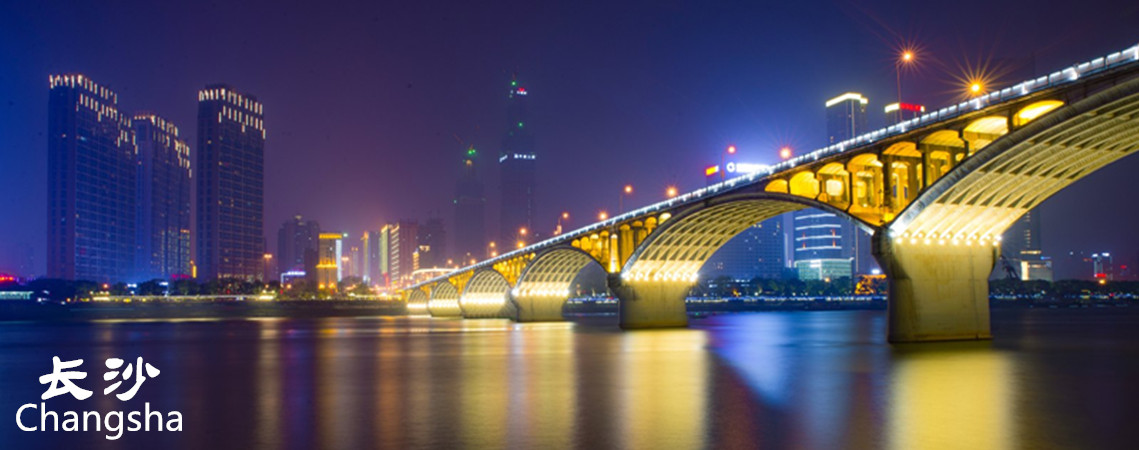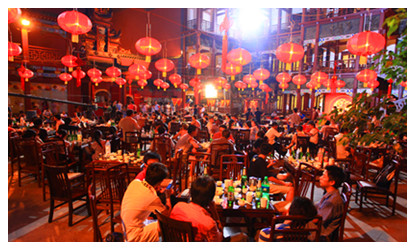
Culture of Changsha
 Changsha is a “Cultural City” gathering great culture and professionals. It is a remarkable place producing outstanding people and brilliant minds. The world’s cultural celebrity Qu Yuan, Han Dynasty outstanding politician Jia Yi and Tang Dynasty great poet Du Fu all “moved to Changsha” and left their masterpieces by the Xiangjiang River. The Song Dynasty’s famous Confucian scholar Zhu Xi and Zhang Shi even held lectures at the thousand-year old Yuelu Academy and gradually formed the Huxiang Culture which had a far-reaching influence with the “statecraft ideology” as its core. “The elites were bred in Chu, and the best were gathering here.” Since the mid-Qing Dynasty, such celebrities as Zeng Guofan and Zuo Zongtang have all studied at the Yuelu Academy.
Changsha is a “Cultural City” gathering great culture and professionals. It is a remarkable place producing outstanding people and brilliant minds. The world’s cultural celebrity Qu Yuan, Han Dynasty outstanding politician Jia Yi and Tang Dynasty great poet Du Fu all “moved to Changsha” and left their masterpieces by the Xiangjiang River. The Song Dynasty’s famous Confucian scholar Zhu Xi and Zhang Shi even held lectures at the thousand-year old Yuelu Academy and gradually formed the Huxiang Culture which had a far-reaching influence with the “statecraft ideology” as its core. “The elites were bred in Chu, and the best were gathering here.” Since the mid-Qing Dynasty, such celebrities as Zeng Guofan and Zuo Zongtang have all studied at the Yuelu Academy. Chu-Han Culture of Changsha
Changsha is a historical city known both in China and abroad. Its name has existed for more than 3,000 years. Once a strategic place in the state of Chu during Warring States Period (475-221 BC), Changsha is now one of the foremost historical and cultural cities in China.
The city enjoys splendid ancient culture and is home to many ancient tombs and relics. Millennia of history have left numerous attractions for tourists including the Yuelu Academy, Mawangdui Tomb, Kaifu Temple, Tianxin Pavilion and the Orange Island.
But Changsha’s history isn’t all ancient. The city was once a cradle of the Chinese revolution and home to great leaders. Mao Zedong used to study, work and live in the city, and Liu Shaoqi, Hu Yaobang and Zhu Rongji also lived here. Meanwhile, vibrant bars, karaoke clubs and a rising Hunan TV industry have made Changsha a city of entertainment.
Outstanding figures
A holy city of the revolution, Changsha is where Mao Zedong spent his extraordinary adolescence. The locations where he lived, studied and engaged in revolutionary activities have all become important bases for patriotic education today. The Hunan First Normal University, Aiwan Pavilion on Yuelu Hill, and the old sites of the Xinmin Society and the CPC Hunan committee have all been well preserved. The old site of the Autumn Harvest Uprising Revolutionary Armies was named a key national heritage conservation site. Other revolutionary resorts include the Wanglu Park, the Shen Mansion and the old site of the Hunan Self-Study College.
Changsha is also the hometown of Liu Shaoqi, Hu Yaobang and Zhu Rongji. Zeng Guofan, Huang Xing and Cai E in modern history also left stories behind in Changsha. Liu Shaoqi’s former residence in Ningxiang county, Huang Xing’s former residence in Changsha county and Tan Sitong’s former residence in Liuyang city were all named State-protected national relics. The former residences of Li Fuchun, Hu Yaobang, Xu Teli and Yang Kaihui are also now open to the public after renovations.
The Hunan Provincial Museum and the Changsha Museum are home to Changsha’s essential cultural relics. The Hunan Provincial Museum sits to the west of Martyr Memorial Park, and features relics unearthed from the Mawangdui Han Dynasty Tomb and well-preserved 2,100-year-old remains from the Western Han Dynasty. A 49-gram silk artifact of Buddhist clothing is one of its kind worldwide and reflects the superb weaving skills of ancient Chinese artisans. Silk manuscripts bearing more than 120,000 words offer unprecedented insight into the pre-Qin period. The Planetary Astrology and the Astronomy and Weather Astrology, two ancient silk manuscripts, have revealed marvelous achievements in astronomy studies. What’s more, the manuscript’s calligraphy style features tremendous artistic value in itself.
The Jiandu (meaning inscribed bamboo slips) Museum of Changsha sits at the center of the city. It is home to more than 30,000 precious cultural relics, including ancient painted pottery over 7,000 years old, bronze cymbals, exquisite Warring States Period bronze mirrors, and Tang Dynasty (AD 618-907) color pottery.
Intangible cultural heritage
Changsha has a long history and hosts many art forms recognized nationwide as “intangible cultural heritage”, including Hunan embroidery, Liuyang fireworks, chrysanthemum stone carving, Hunan opera and the Huogong Palace temple fair. The city is also known for its Chu culture, decorative porcelain, and ancient institutions of higher learning, calligraphy, painting and music. Changsha’s flower-drum opera is very popular among local people, featuring folk songs played with a flower-drum. The opera took shape at the end of the Qing Dynasty (1644-1911). The Liu Hai Cuts Firewood, a flower-drum opera from the 50s, is popular across China.
Food culture
Hunan cuisine is one of China’s eight regional cuisines. It developed its own style as early as 2,000 years ago from a combination of folk recipes, sacrificial temple food and imperial cuisine. Hunan cuisine requires exquisite cooking methods, high-quality materials and fine ingredients. It has rich colors and a distinctive spicy and slightly sweet taste, different from both the Sichuan and Xiajiang cuisines. It’s also fresh and tender, but different from Guangdong food. Hunan cuisine is popular among foodies both in China and abroad.






 Ask Questions ?
Ask Questions ?